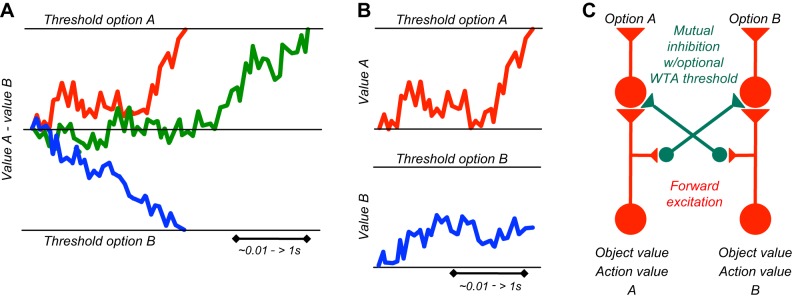FIGURE 36.

Schematics of decision mechanisms. A: diffusion model of perceptual decisions. Difference signals for sensory evidence or value increase in a single integrator towards a specific threshold for one or the opposite choice option (red, blue). Later threshold acquisition results in later decision (green). Time basis varies according to the nature of the decision and the difficulty in acquiring sensory evidence and valuing the options. B: race model of perceptual decisions. Separate signals for each choice option increase in separate integrators towards specific thresholds. The option whose value signal reaches the threshold first (red) will be pursued, whereas the lower signal at this point loses (blue). C: basic competition mechanism. Separate inputs for each choice option (A, B) compete with each other through lateral inhibition. Feedforward excitation (red) enhances stronger options, and mutual inhibition (green) reduces weaker options even more, thus enhancing the contrast between options. This competition mechanism defines object value and action value as input decision variables. For a winner-take-all (WTA) version, a threshold cuts off the weaker of the resulting signals and makes the stronger option the only survivor.
